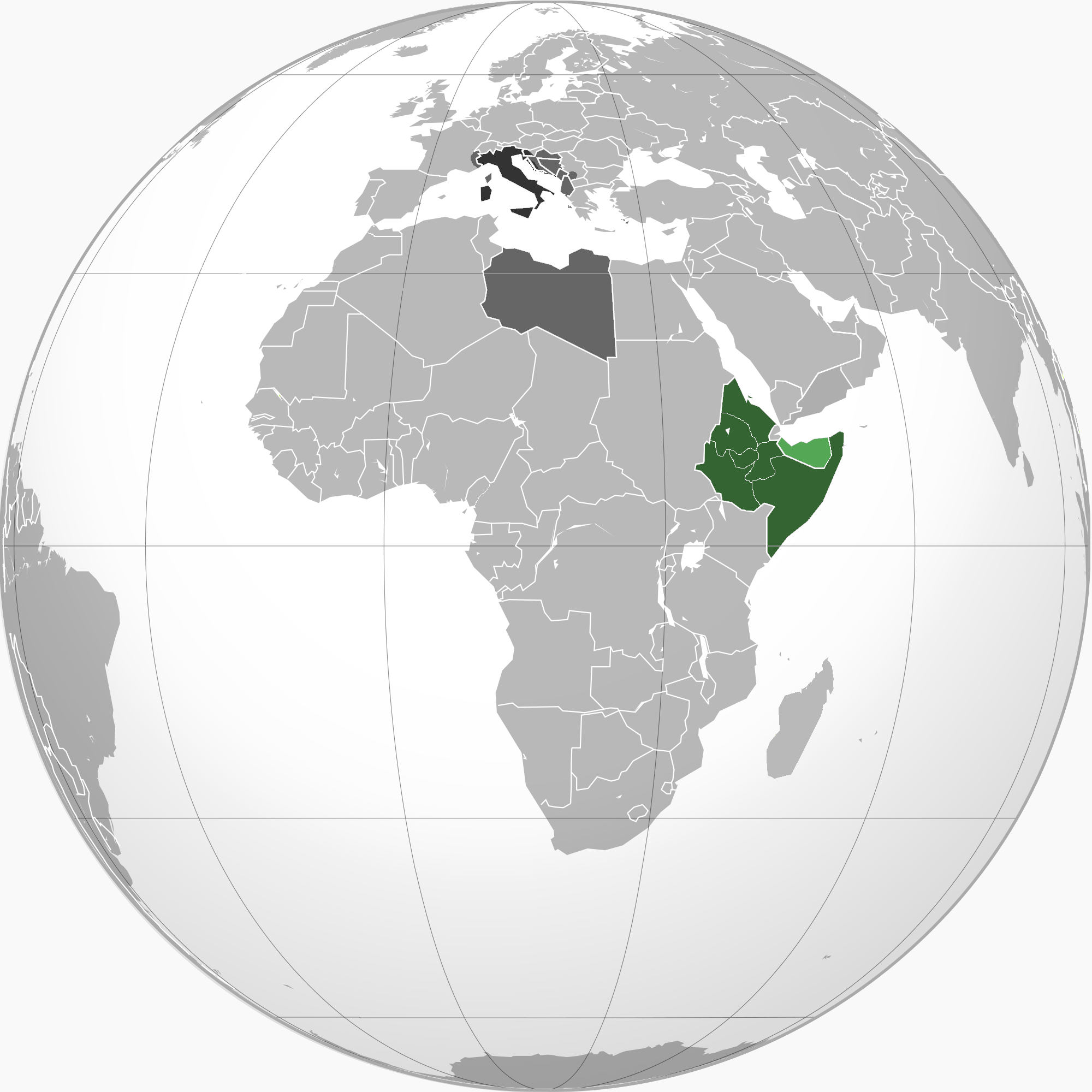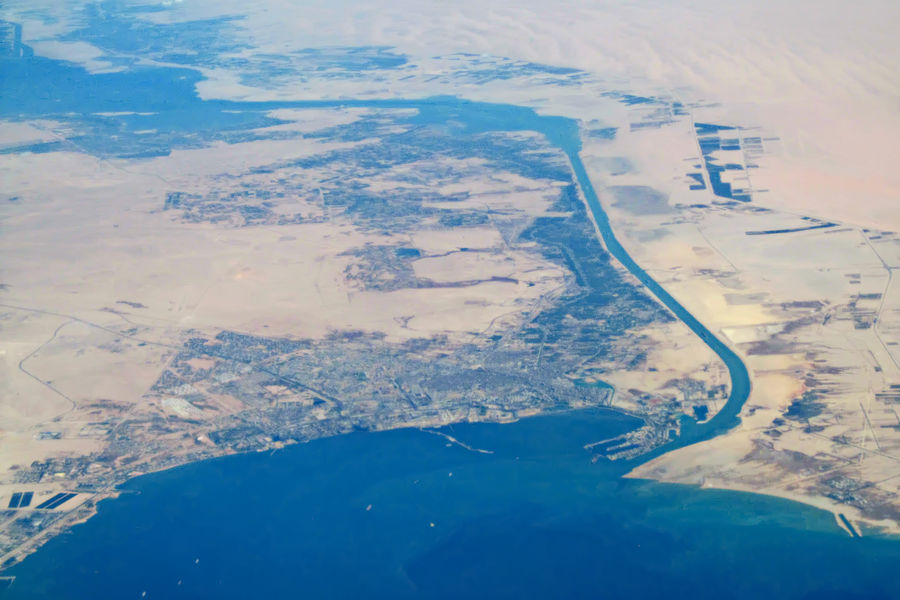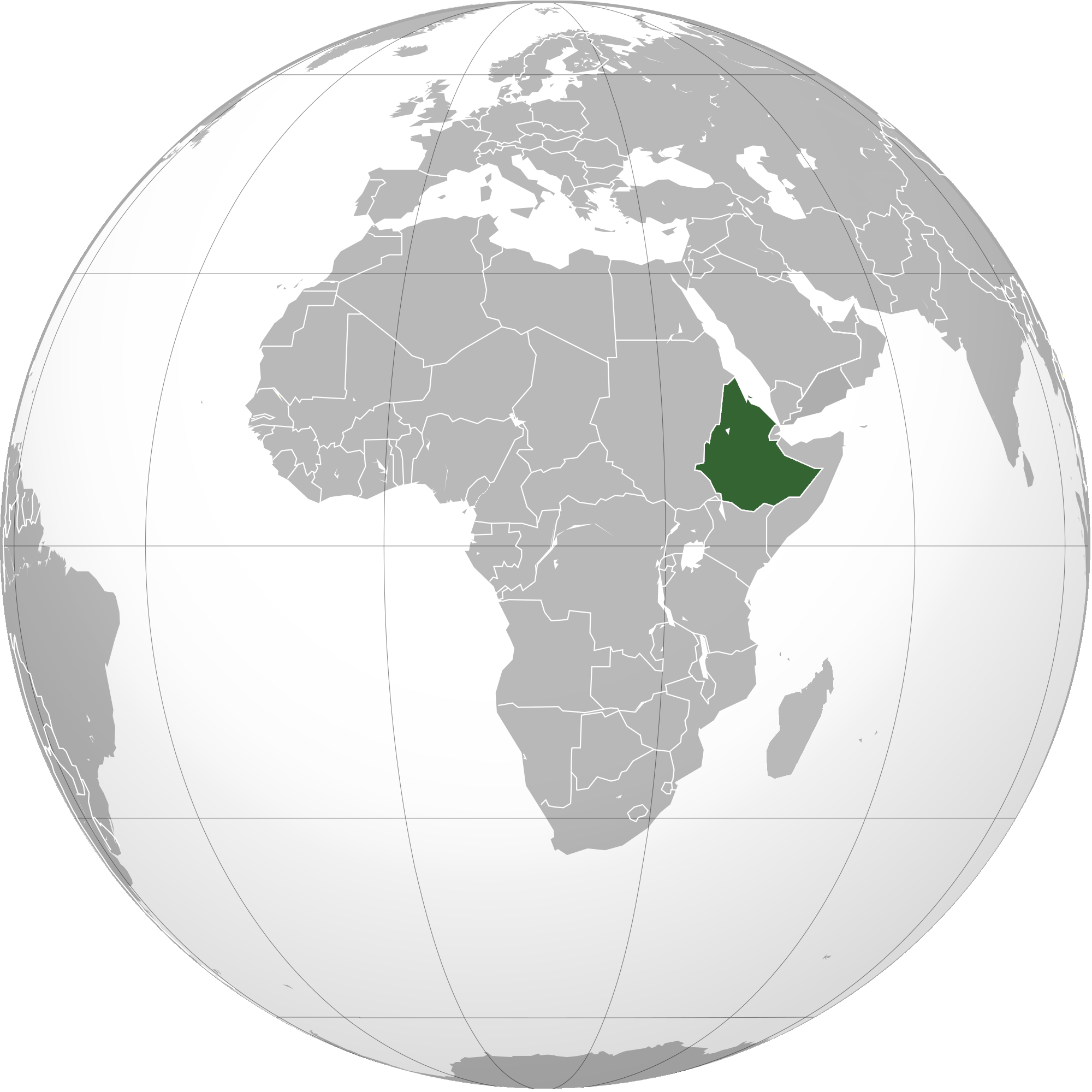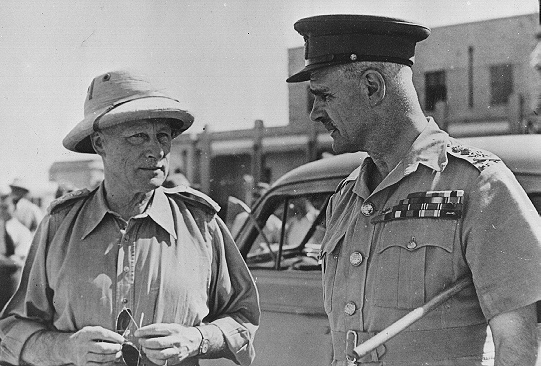|
Italian Conquest Of British Somaliland
The Italian invasion of British Somaliland (3–19 August 1940) was part of the East African campaign (1940–1941) in which Italian, Eritrean and Somali forces entered the Somaliland Protectorate and defeated its garrison of British, Commonwealth and colonial forces supported by Somali irregulars. The Italian victory was based on mobility and speed but was hampered by the terrain, rainy weather and British resistance. At the Battle of Tug Argan (11–15 August) Italian attacks had the advantage of artillery and the outnumbered defenders were gradually worn down and slowly outflanked, until the remaining fortified hilltops were vulnerable to capture. After the failure of a counter-attack towards the Mirgo Pass, the local commander, Major-General Reade Godwin-Austen, had too few men to retrieve the situation and to keep open an escape route at the same time and was given permission to retreat towards Berbera. The British fought a rearguard action at Barkasan on 17 August a ... [...More Info...] [...Related Items...] OR: [Wikipedia] [Google] [Baidu] |
East African Campaign (World War II)
The East African campaign (also known as the Abyssinian campaign) was fought in East Africa during the Second World War by Allies of World War II, mainly from the British Empire, against Kingdom of Italy, Italy and its colony of Italian East Africa, between June 1940 and November 1941. The British Middle East Command with troops from the United Kingdom, Union of South Africa, South Africa, British Raj, British India, Uganda Protectorate, British Kenya, Kenya, British Somaliland, Somaliland, British West Africa, West Africa, Northern Rhodesia, Northern and Southern Rhodesia, Anglo-Egyptian Sudan, Sudan and Nyasaland participated in the campaign. These were joined by the Allied of Belgian Congo, Ethiopian Empire, Imperial Ethiopian Arbegnoch (resistance forces) and a small unit of Free French Forces. Italian East Africa was defended by the (Italian East African Armed Forces Command), with units from the (Royal Army), (Royal Air Force) and (Royal Navy). The Italian forces inclu ... [...More Info...] [...Related Items...] OR: [Wikipedia] [Google] [Baidu] |
United Kingdom
The United Kingdom of Great Britain and Northern Ireland, commonly known as the United Kingdom (UK) or Britain, is a country in Northwestern Europe, off the coast of European mainland, the continental mainland. It comprises England, Scotland, Wales and Northern Ireland. The UK includes the island of Great Britain, the north-eastern part of the island of Ireland, and most of List of islands of the United Kingdom, the smaller islands within the British Isles, covering . Northern Ireland shares Republic of Ireland–United Kingdom border, a land border with the Republic of Ireland; otherwise, the UK is surrounded by the Atlantic Ocean, the North Sea, the English Channel, the Celtic Sea and the Irish Sea. It maintains sovereignty over the British Overseas Territories, which are located across various oceans and seas globally. The UK had an estimated population of over 68.2 million people in 2023. The capital and largest city of both England and the UK is London. The cities o ... [...More Info...] [...Related Items...] OR: [Wikipedia] [Google] [Baidu] |
Red Sea
The Red Sea is a sea inlet of the Indian Ocean, lying between Africa and Asia. Its connection to the ocean is in the south, through the Bab-el-Mandeb Strait and the Gulf of Aden. To its north lie the Sinai Peninsula, the Gulf of Aqaba, and the Gulf of Suez—leading to the Suez Canal. It is underlain by the Red Sea Rift, which is part of the Great Rift Valley. The Red Sea has a surface area of roughly , is about long, and wide at its widest point. It has an average depth of , and in the central Suakin Trough, it reaches its maximum depth of . Approximately 40% of the Red Sea is quite shallow at less than deep and about 25% is less than deep. The extensive shallow shelves are noted for their marine life and corals. More than 1,000 invertebrate species and 200 types of soft and hard coral live in the sea. The Red Sea is the world's northernmost tropical sea and has been designated a Global 200 ecoregion. Extent The International Hydrographic Organization defines the limi ... [...More Info...] [...Related Items...] OR: [Wikipedia] [Google] [Baidu] |
Suez Canal
The Suez Canal (; , ') is an artificial sea-level waterway in Egypt, Indo-Mediterranean, connecting the Mediterranean Sea to the Red Sea through the Isthmus of Suez and dividing Africa and Asia (and by extension, the Sinai Peninsula from the rest of Egypt). The canal is a key trade route between Europe and Asia. In 1858, French diplomat Ferdinand de Lesseps formed the Suez Canal Company, Compagnie de Suez for the express purpose of building the canal. Construction of the canal lasted from 1859 to 1869. The canal officially opened on 17 November 1869. It offers vessels a direct route between the Atlantic Ocean#North Atlantic, North Atlantic and northern Indian Ocean, Indian oceans via the Mediterranean Sea and the Red Sea, avoiding the South Atlantic and southern Indian oceans and reducing the journey distance from the Arabian Sea to London by approximately , to 10 days at or 8 days at . The canal extends from the northern terminus of Port Said to the southern terminus of Port ... [...More Info...] [...Related Items...] OR: [Wikipedia] [Google] [Baidu] |
French Third Republic
The French Third Republic (, sometimes written as ) was the system of government adopted in France from 4 September 1870, when the Second French Empire collapsed during the Franco-Prussian War, until 10 July 1940, after the Fall of France during World War II led to the formation of the Vichy France, Vichy government. The French Third Republic was a parliamentary republic. The early days of the French Third Republic were dominated by political disruption caused by the Franco-Prussian War of 1870–1871, which the French Third Republic continued to wage after the fall of Emperor Napoleon III in 1870. Social upheaval and the Paris Commune preceded the final defeat. The German Empire, proclaimed by the invaders in Palace of Versailles, annexed the French regions of Alsace (keeping the ) and Lorraine (the northeastern part, i.e. present-day Moselle (department), department of Moselle). The early governments of the French Third Republic considered French Third Restoration, re-establi ... [...More Info...] [...Related Items...] OR: [Wikipedia] [Google] [Baidu] |
Second Italo-Ethiopian War
The Second Italo-Ethiopian War, also referred to as the Second Italo-Abyssinian War, was a war of aggression waged by Fascist Italy, Italy against Ethiopian Empire, Ethiopia, which lasted from October 1935 to February 1937. In Ethiopia it is often referred to simply as the Italian Invasion (; Oromo language, Oromo: Weerara Xaaliyaanii), and in Italy as the Ethiopian War (). It is seen as an example of the expansionist policy that characterized the Axis powers and the ineffectiveness of the League of Nations before the outbreak of World War II. On 3 October 1935, two hundred thousand soldiers of the Italian Army commanded by Marshal Emilio De Bono attacked from Italian Eritrea, Eritrea (then an Italian colonial possession) without prior declaration of war. At the same time a minor force under General Rodolfo Graziani attacked from Italian Somalia. On 6 October, Adwa was conquered, a symbolic place for the Italian army because of the defeat at the Battle of Adwa by the Ethiopian ar ... [...More Info...] [...Related Items...] OR: [Wikipedia] [Google] [Baidu] |
Ethiopian Empire
The Ethiopian Empire, historically known as Abyssinia or simply Ethiopia, was a sovereign state that encompassed the present-day territories of Ethiopia and Eritrea. It existed from the establishment of the Solomonic dynasty by Yekuno Amlak around 1270 until the 1974 Ethiopian coup d'état, 1974 coup d'état by the Derg, which ended the reign of the final Emperor, Haile Selassie. In the late 19th century, under Emperor Menelik II, the Menelik II's conquests, empire expanded significantly to the south, and in 1952, Federation of Ethiopia and Eritrea, Eritrea was federated under Selassie's rule. Despite being surrounded by hostile forces throughout much of its history, the empire maintained a kingdom centered on its Orthodox Tewahedo, ancient Christian heritage. Founded in 1270 by Yekuno Amlak, who claimed to descend from the last Kingdom of Aksum, Aksumite king and ultimately King Solomon and the Queen of Sheba, it replaced the Agaw people, Agaw Zagwe Kingdom, kingdom of the Za ... [...More Info...] [...Related Items...] OR: [Wikipedia] [Google] [Baidu] |
Benito Mussolini
Benito Amilcare Andrea Mussolini (29 July 188328 April 1945) was an Italian politician and journalist who, upon assuming office as Prime Minister of Italy, Prime Minister, became the dictator of Fascist Italy from the March on Rome in 1922 until Fall of the Fascist regime in Italy, his overthrow in 1943. He was also of Italian fascism from the establishment of the Italian Fasces of Combat in 1919, until Death of Benito Mussolini, his summary execution in 1945. He founded and led the National Fascist Party (PNF). As a dictator and founder of fascism, Mussolini inspired the List of fascist movements, international spread of fascism during the interwar period. Mussolini was originally a socialist politician and journalist at the Avanti! (newspaper), ''Avanti!'' newspaper. In 1912, he became a member of the National Directorate of the Italian Socialist Party (PSI), but was expelled for advocating military intervention in World War I. In 1914, Mussolini founded a newspaper, ''Il P ... [...More Info...] [...Related Items...] OR: [Wikipedia] [Google] [Baidu] |
Claude Auchinleck
Field marshal (United Kingdom), Field Marshal Sir Claude John Eyre Auchinleck ( ) (21 June 1884 – 23 March 1981), was a British Indian Army commander who saw active service during the world wars. A career soldier who spent much of his military career in British Raj, India, he rose to become commander-in-chief of the British Indian Army, Indian Army by early 1941 during the Second World War. In July 1941 he was appointed commander-in-chief of the Middle East Theatre, but after initial successes the war in North Africa turned against the British-led forces under his command and he was relieved of the post in August 1942 during the North African campaign. In June 1943, he was once again appointed Commander-in-Chief, India, where his support through the organisation of supply, maintenance and training for General William Slim, 1st Viscount Slim, William Slim's Fourteenth Army (United Kingdom), Fourteenth Army played an important role in its success. He served as commander-in-chief ... [...More Info...] [...Related Items...] OR: [Wikipedia] [Google] [Baidu] |
Winston Churchill
Sir Winston Leonard Spencer Churchill (30 November 1874 – 24 January 1965) was a British statesman, military officer, and writer who was Prime Minister of the United Kingdom from 1940 to 1945 (Winston Churchill in the Second World War, during the Second World War) and again from 1951 to 1955. For some 62 of the years between 1900 and 1964, he was a Member of Parliament (United Kingdom), member of parliament (MP) and represented a total of five Constituencies of the Parliament of the United Kingdom, constituencies over that time. Ideologically an adherent to economic liberalism and imperialism, he was for most of his career a member of the Conservative Party (UK), Conservative Party, which he led from 1940 to 1955. He was a member of the Liberal Party (UK), Liberal Party from 1904 to 1924. Of mixed English and American parentage, Churchill was born in Oxfordshire into the wealthy, aristocratic Spencer family. He joined the British Army in 1895 and saw action in British R ... [...More Info...] [...Related Items...] OR: [Wikipedia] [Google] [Baidu] |
Archibald Wavell
Field Marshal Archibald Percival Wavell, 1st Earl Wavell, (5 May 1883 – 24 May 1950) was a senior officer of the British Army. He served in the Second Boer War, the Bazar Valley Campaign and the First World War, during which he was wounded in the Second Battle of Ypres. In the Second World War, he served initially as Commander-in-Chief Middle East, in which role he led British forces to victory over the Italian Army in Eritrea- Abyssinia, western Egypt and eastern Libya during Operation Compass in December 1940, only to be defeated by Erwin Rommel's Panzer Army Africa in the Western Desert in April 1941. He served as Commander-in-Chief, India, from July 1941 until June 1943 (apart from a brief tour as Commander of American-British-Dutch-Australian Command) and then served as Viceroy of India until his retirement in February 1947. Early life Born the son of Archibald Graham Wavell (who later became a major-general in the British Army and military commander of Johanne ... [...More Info...] [...Related Items...] OR: [Wikipedia] [Google] [Baidu] |
Coup De Main
A ''coup de main'' (, : , ) is a swift attack that relies on speed and surprise to accomplish its objectives in a single blow. Definition The United States Department of Defense defines it as "An offensive operation that capitalizes on surprise and simultaneous execution of supporting operations to achieve success in one swift stroke." The term ''coup de main'' originally meant "by direct assault rather than by artillery". Examples The first Airborne forces, airborne assault by the Allies of World War II, Allies in World War II during the operation Overlord, invasion of Normandy, on Pegasus Bridge, is sometimes referred to as ''Operation Coup de Main'', although the actual code name for the British airborne attack was Operation Tonga. In the American Civil War, Emory Upton used the tactic for the Union Army during the Battle of Spotsylvania Courthouse. During the Second Battle of Porto, Arthur Wellesley, 1st Duke of Wellington, Arthur Wellesley crossed the Douro in a ''cou ... [...More Info...] [...Related Items...] OR: [Wikipedia] [Google] [Baidu] |








